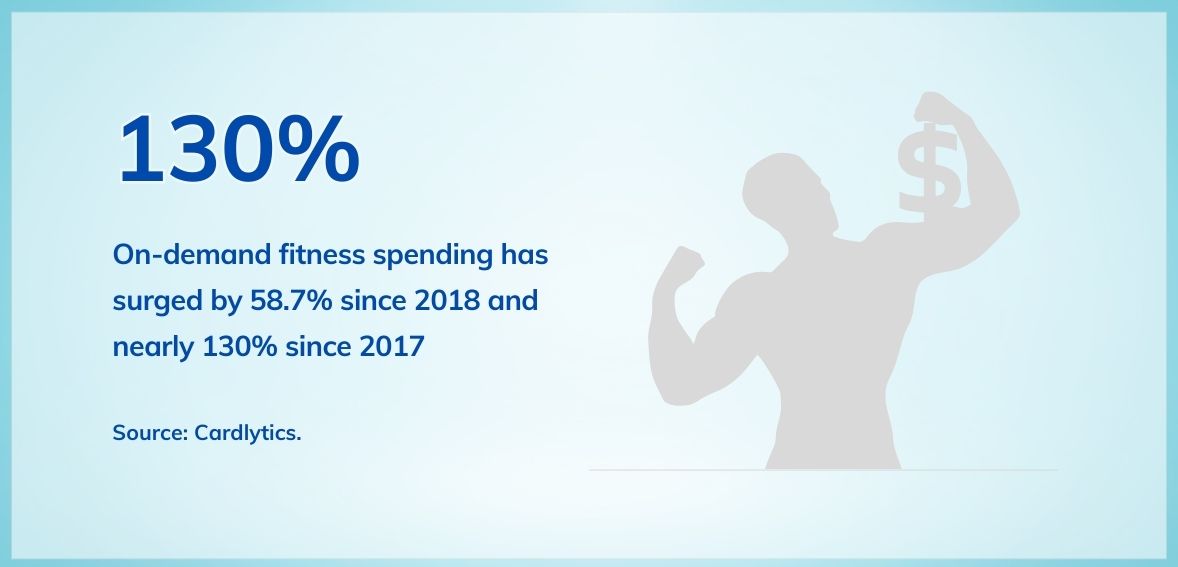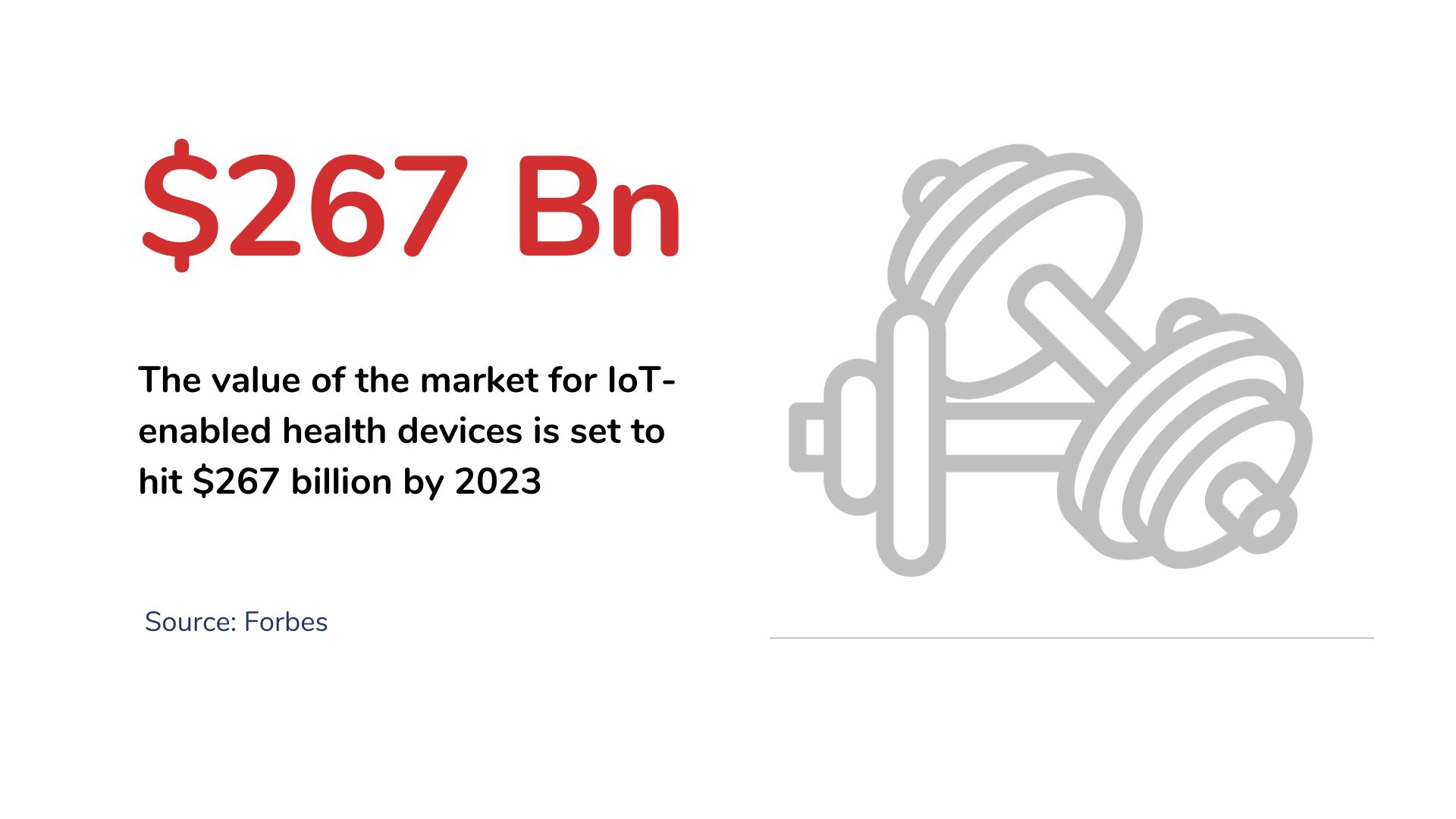
By admin November 3, 2023
The fitness industry has seen substantial changes in recent decades, becoming a multi-billion dollar market that is impacting the lives of millions. The way we approach fitness has evolved with various important factors. Moving forward, the future of fitness looks promising, thanks to exciting new technological advancements and developments expected in 2023.
Whether you’re someone who is passionate about fitness or just want to know a little peak of the business side of the fitness industry. In this article, we will explore the latest fitness spend trends that are shaping the fall of 2023 and beyond.
Current Fitness Spend Trends
The fitness spending is increasing across various categories, driven primarily by three key segments:
- Boutique studios
- Traditional gyms
- On-demand fitness services
While on-demand fitness subscriptions constitute the smallest share of fitness spending (6%), these convenient online and app-based workout options are experiencing the fastest growth compared to other fitness categories. On-demand fitness spending has surged by 58.7% since 2018 and nearly 130% since 2017.

Despite the rapid expansion of fitness disruptors, traditional gyms still dominate the majority of fitness spending (72%) and have seen an overall spending increase of 3.1% since 2018. Meanwhile, boutique studios represent the remaining 23% of expenditure and have witnessed a 5.1% year-over-year growth.
Notably, individuals who opt for studio memberships exhibit a higher willingness to invest in their fitness, with an average monthly spending of approximately $136. Comparatively, consumers typically spend about $59 and $48 per month on traditional gym memberships and on-demand fitness services, respectively.
Recognizing the crucial window of opportunity during the initial months when motivation is high, health and fitness retailers can strategically time their incentives and programs to retain customers and re-energize those at risk of dropping off.
Rising Debt among Younger Generations for Health Goals
A significant portion of millennials and Gen Z individuals have set their sights on health and fitness as part of their New Year’s resolutions, surpassing the broader population in this regard. However, this heightened focus on wellness is leading these groups to rely on credit cards to support their fitness endeavors. Approximately 38% of millennials and 41% of Gen Z have either encountered or are currently grappling with debt as a result of expenses linked to their fitness pursuits.
Traditionally inclined toward investing in experiences rather than material possessions, millennials align with this trend. While prioritizing one’s health and well-being is undoubtedly commendable, it is crucial to strike a balance and ensure that these pursuits do not compromise one’s financial stability.
Expanding Physical Activity – Opportunities for All
When we consider the “fitness industry,” we often envision traditional gym settings, yoga studios, and wearable technology. However, maintaining a healthy lifestyle doesn’t necessarily require strict workout regimens. People can find joy in sports, dance, cycling, or even incorporating physical activity into their daily routines. This realization opens up a multitude of opportunities for businesses and policymakers to promote a more inclusive approach to fitness, reaching beyond the affluent urban and suburban populations, the younger generation, and those already focused on their health.
Here are some global models that US policymakers and businesses could examine for inspiration:
- Emphasizing Community-based Physical Activity: Initiatives, like community-sponsored open streets for biking program that provides free fitness classes in local parks and Wellness Day, encourage mass participation in active community events worldwide.
- Integrating Exercise into Healthcare Practices: Taking cues from Singapore and the UK, where doctors prescribe exercise supported by public infrastructure and resources.
- Cultivating Active Lifestyles in Schools: The Active Schools initiative, operating in collaboration with over 23,000 US schools, integrates 60 minutes of movement and play into each day for every K12 student, fostering healthy habits from an early age.
- Senior-Friendly Fitness Spaces: Following the lead of progressive nations, installing convenient exercise equipment in public areas and parks to encourage fitness and social interactions among the elderly, combating loneliness and isolation.
- Promoting Inclusive Dance Programs: Drawing inspiration from the global trend of dance-based fitness classes, observing the success of Asia’s plaza dancing movement, and the growing popularity of silent discos in regions like the UK, Australia, and Singapore to encourage broader participation and engagement.
The US Dominance in the Physical Activity Market
When it comes to the world of physical activity, the US stands out for its notable contributions and market leadership. Here are five key ways in which the US maintains its prominent position:
- Highest Consumer Spending: With a staggering $265 billion expenditure, US consumers surpass all other countries globally, emphasizing the nation’s strong commitment to physical fitness and well-being.
- Leading Global Market Share: Accounting for nearly one-third of the global market, the US demonstrates its significant influence and impact on the worldwide physical activity landscape.
- Top Performer in All Segments: Not only does the US claim the top spot for the overall market size, but it also leads in all six subsegments, solidifying its position as a key player in various aspects of the physical activity industry.
- Noteworthy Per Capita Spending: With an average of $810 spent per capita on physical activity, the US ranks second globally, following closely after Monaco, showcasing the country’s significant individual investment in health and fitness.
- Accelerated Market Growth: The US is projected to experience significant market growth in the coming years, with an annual expansion rate of 5.2 percent. This exceeds the anticipated GDP growth of 3.5 percent, as indicated by the IMF. The US is expected to play a crucial role in shaping the industry’s future, contributing approximately 25 percent to global market growth during this period.
Insights into Fitness Demographics
Recognizing the diverse demographics engaging with fitness services is vital for the industry to tailor its offerings effectively.
- Gender Diversity: The fitness landscape has become more inclusive, witnessing active participation from both men and women. Recent data from the 2022 IHRSA Global Report indicates that globally, women represent a significant 57% of gym-goers, underlining their substantial presence in fitness facilities.
- Age Dynamics: Fitness has captured the interest of individuals across all age groups, showcasing the industry’s versatility. 2022 data suggests a decline in physical activity with age, yet efforts are underway to encourage fitness among older adults. In the US, Millennials lead the gym membership count at 35%, followed by Gen X and Baby Boomers at 22% and 21%, respectively. Gen Z and the Silent Generation follow closely, contributing 16% and 6% to gym attendance. Notably, statistics highlight the notable growth of the latter two age groups in fitness clubs.
- Global Enthusiasm: The pursuit of fitness transcends geographical boundaries, with people worldwide prioritizing their health. Statista forecasts the Asia-Pacific region to take the lead in the fitness market value in 2023, followed by North America and Europe. This global trajectory underscores the pervasive impact of the fitness industry on a global scale.
The recent surge in fitness adoption across diverse demographics, compounded by the pandemic’s influence, has accelerated the industry’s growth. Digital platforms have played a pivotal role, enabling individuals worldwide to access fitness services conveniently from their homes.
Top Trends In The Fitness Sports Industry 2023

1. Inclusive Apps Tailored to Your Preferences
Surveys indicate that a significant barrier to regular exercise and a leading cause of workout abandonment is the struggle to balance daily responsibilities, leisure, and fitness routines. This challenge often stems from a lack of time, reminders, and motivation.
This highlights the significance of improving the user experience of fitness apps, ensuring that they cater to individual goals and have the ability to motivate consistency. Data shows a 5% growth in consumer expenditure on connected fitness equipment (equipment that integrates with an app) in 2021, coupled with a 10% increase in spending on paid apps.
Mere calorie tracking and workout duration monitoring are no longer sufficient. Today, apps must offer precise measurement and meticulous tracking to meet the evolving needs of users.
2. Rise Of Fitness Gadgets
Although spending on athletic gear, game tables, and exercise equipment saw a notable increase in 2021, the proportion of consumer units making these purchases slightly decreased. In 2021, these purchases accounted for 1.6 percent of all consumer units, down from 1.7 percent in 2020.
3. Westerners Are The Spenders
When it comes to health and fitness, the Western States in the US take the lead as top spenders. On average, individuals in this region invest about $122,711 throughout their lifetime, which exceeds the national average by $10,711. The national average spending stands at $111,554.
Oregon stands out as the most indulgent state for health and fitness, with a significant tendency to spend in higher price brackets. Monthly, around 13% of the population invests over $100 in their overall health and fitness routine, while over a quarter (26%) allocate more than $81 for gym attire. Additionally, nearly a quarter (21%) shell out over $100 for personal trainers or workout plans.
4. Weight Loss And Mental Health Service On The Rise
In 2022, consumer spending in the healthcare industry showcased a notable emphasis on specific segments, with weight loss and fitness, mental health, and women’s health solutions taking the forefront. Notably, European consumers allocated more than $500 million toward health and fitness, as well as medical apps listed in app stores during the same year.
A substantial portion of patients or consumers demonstrated a willingness to invest in weight loss services (43%), closely followed by mental health services (40%), and fitness services (35%).
5. Subscription-based Model A Success in Fitness and Wellness?
In contrast, the majority (67%) of digital health decision-makers favor the subscription-based payment method as the most effective pricing model. This pricing approach is widely adopted across various industries, including the digital health sector, with pricing structures differing across different segments of the digital health market.

Within the digital health market segment, patients have the option to select either out-of-pocket payments or pursue reimbursement through health plans or employers. In the digital diabetes market, for example, subscription pricing has emerged as the dominant model.
Conclusion
The future of the industry looks promising, thanks to technological advances, consumer-focused innovations, and a growing emphasis on overall well-being. The fitness industry is continuously working towards promoting accessibility, diversity, and holistic approaches to fitness. These efforts will contribute to a healthier and more active global population, ensuring a positive upward trend for the industry.
Frequently Asked Questions
Q: What are the current trends in the fitness industry in 2023?
Some notable trends in the fitness industry include the increasing popularity of virtual workouts, the incorporation of wearable technology, and a strong emphasis on community-based exercise. These trends align with the broader health and wellness movement and contribute to the industry’s continued growth. Mental health and self-care have also become focal points within this context.
Q: What percentage of individuals will be engaged in workouts in 2023?
Almost half of adults in the US, 46.9% to be exact, meet the recommended guidelines for aerobic physical activity.
Q: What is the outlook for the fitness business in general?
The future of the fitness industry looks bright, as innovative technologies are changing the way people approach and achieve their health and fitness goals. These advancements have opened up opportunities in lucrative niches such as boutique studios, online training, and wearable technology.